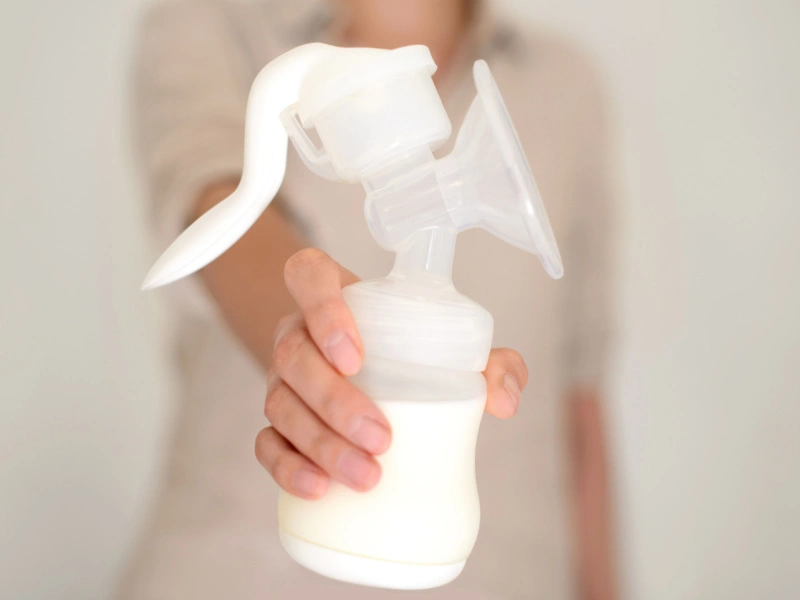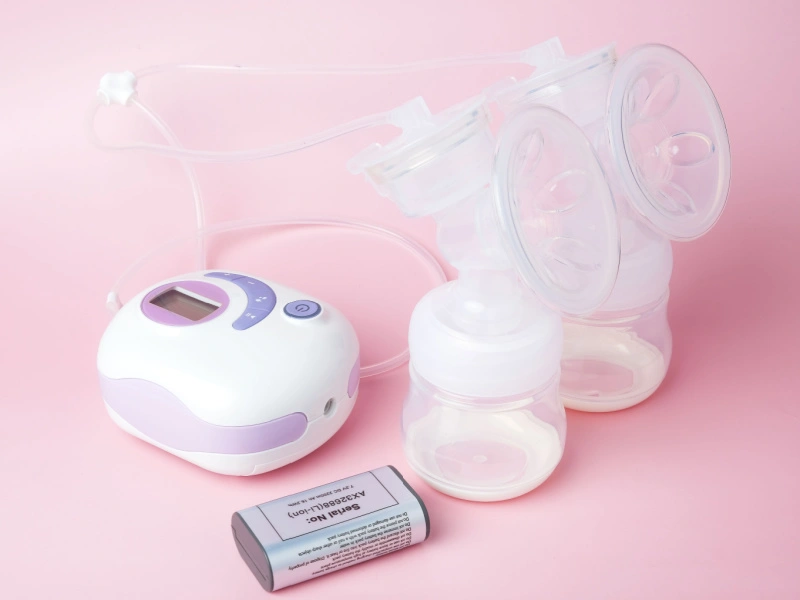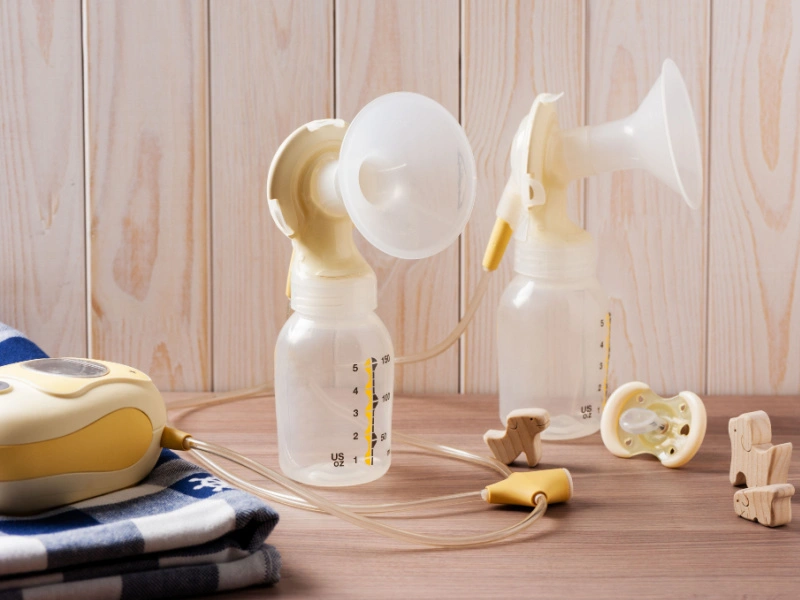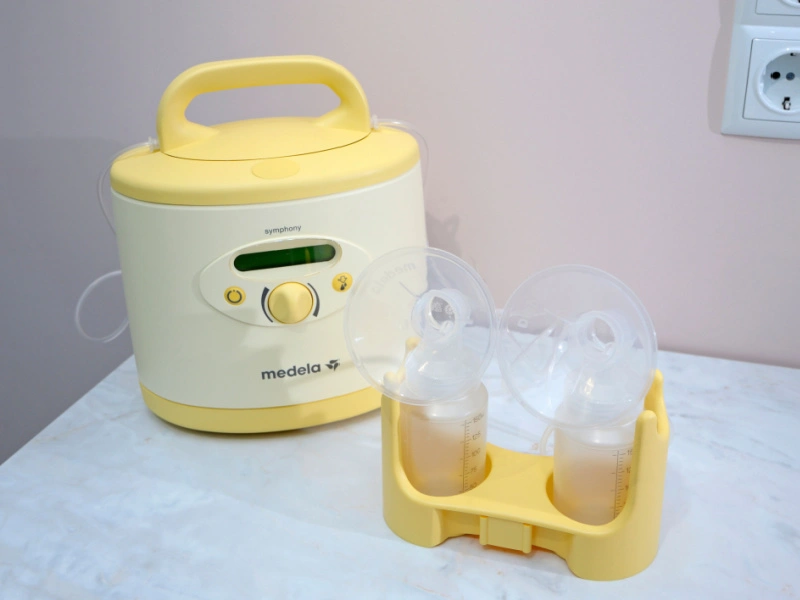How to choose a breast pump? The new mom’s guide
Breastfeeding has many benefits for mom and baby, but it is also a challenging journey. To make breastfeeding easier and less stressful, moms need support from family members, specialists, and magical products like the breast pump. In this detailed guide, you will find everything you need to choose a breast pump that suits your needs.


Benefits of using a breast pump when breastfeeding
Using a breast pump while breastfeeding can offer several benefits for both the mother and the baby. Here are some of the main advantages:
Maintaining Milk Supply
Pumping can help stimulate and maintain milk production, especially if the baby is not feeding regularly or efficiently.
Storing Extra Milk
This allows mothers to store breast milk that can be used if they are away from their baby or when they may be unable or choose not to breastfeed directly.
Relief from Engorgement
An engorged breast is painful and hard for the baby to latch on. Pumping can help alleviate the pressure and pain of engorgement.
Flexibility
If a mother returns to work or has other commitments, she can pump and store her milk so that her baby can continue getting breast milk's benefits even when she's not around.
Feeding Premature or Sick Babies
Some newborns, especially those who are premature or sick, might be unable to breastfeed directly. Pumping allows mothers to provide breast milk, which can be fed to the baby using other methods.
Increasing Milk Supply
If a mother feels her milk supply is low, pumping after breastfeeding can help improve overall milk production.
Breast Health
Regular milk removal can help prevent issues such as mastitis, a painful infection of the breast tissue.
However, it's essential to note that while there are many benefits to using a breast pump, there's no one-size-fits-all approach to breastfeeding. Each mother and baby duo is unique, and what works best for one might not work best for another.
Types of Breast pumps
Breast pumps come in various types and styles, each designed to meet specific needs and preferences. Here are the primary types of breast pumps:
Manual Breast Pumps
These pumps are operated by hand, often using a lever or handle.
They're generally cheaper than electric pumps and are quiet and portable. However, they might be less efficient than electric pumps and can be tiring for extended periods.

Battery-Operated Breast Pumps
These pumps run on batteries and are more portable than many electric pumps.
They are less potent than plug-in electric pumps but offer more convenience for occasional pumping or travel.

Single Electric Breast Pumps
They are designed to pump one breast at a time. They're often more affordable than double pumps and can be more compact. It might take longer than double pumps since they handle one breast at a time.

Double Electric Breast Pumps
These pumps allow mothers to express milk from both breasts simultaneously.
They're efficient, making them popular among working mothers or those who pump frequently. They tend to be more expensive than single electric pumps.

Hospital-Grade Electric Breast Pumps
These heavy-duty, high-quality pumps generate more cycles per minute and are designed for multiple users (each user should have an accessory kit). They are often used by mothers of premature babies, mothers of twins, stores, or those with specific milk supply concerns. They are generally the most expensive but can often be rented by the hospital or lent for a short period.

Wearable Electric Breast Pumps
These pumps fit inside a bra, allowing for hands-free pumping. They're discreet and can be used on the go. They might be pricier than traditional electric pumps but offer added convenience.
How to choose a breast pump?
Choosing a breast pump can be influenced by several factors, depending on individual needs and circumstances. Here are some considerations and steps to guide you in making an informed decision:
Frequency of Use
If you plan to pump frequently, especially when returning to work, you prefer a double electric pump for efficiency. A manual or a single electric pump might be enough if you only pump occasionally.
Portability and Size
If traveling or pumping away from home, consider a compact pump that runs on batteries.
Noise
If discretion is essential, look for pumps that advertise more silent operation.
Cost
Decide on a budget before starting your search. A broad range of prices and determining what you're willing to spend can help narrow options.
Efficiency
If time is a significant factor, consider a double electric pump expressing milk from both breasts simultaneously.
Adjustability and Comfort
Opt for a pump that adjusts the suction level and cycle speed. This feature can make pumping more comfortable and efficient. Check if the pump has breast shields in different sizes, ensuring a better fit for your nipples.
Power Source
Decide if you want a manual pump, a battery-operated one, or one that plugs into an electrical outlet. Some electric pumps offer multiple power sources.
Brand Reputation and Reviews
Be sure to look for brands known for quality and durability. Reading user reviews can give insight into others' experiences with specific models.
Availability of Replacement Parts
Over time, some parts might need replacement. Ensure that the brand you choose has readily available replacement parts.
Warranty and Customer Service
Consider the warranty period and how easy it is to reach customer service if you face issues with your pump.
Consult a Lactation Expert
A lactation consultant or expert can provide recommendations based on your specific needs.
Remember, the best breast pump for one person might not be the best for another. Consider your needs and circumstances, thoroughly research, and test or see the pump before deciding.
Learn about Foods and drinks that increase breast milk






